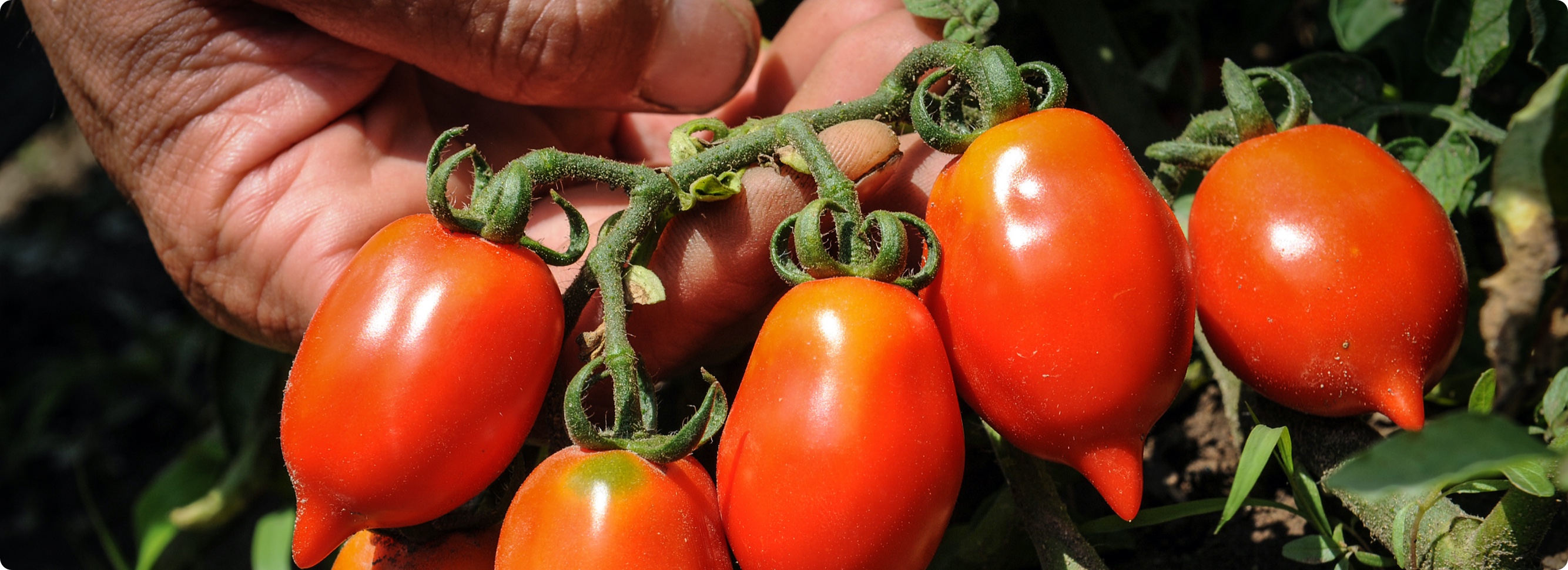
What is it named after? What is special about this variety? How did it arrive in Campania? Let’s go to the discovery of the Piennolo del Vesuvio little tomato.
On the slopes of Vesuvius grows a variety of tomatoes that is unique in the world. Since 2009 it has been recognized with the title of DOP (Protected Designation of Origin) and since 2013 it has a Consortium of Protection created for its defense and spread. Cultivated in places located at least 300 meters from the sea, the Piennolo del Vesuvio little tomato is a full expression of its territory, as much in the organoleptic characteristics as in the traditions and legends that surround it.

Small, oval and roundish, with an elongated shape and a pointed lower end, the Piennolo del Vesuvio little tomato is immediately distinguishable and is one of the symbols of Campania. It can be found in various traditional preparations such as pizza or “pummarola” (tomato sauce) and it is also excellent to eat “in purity”. This variety is unique from the organoleptic point of view, above all thanks to the Vesuvius, that with its lava soils gives to the little tomatoes high concentrations of acids and sugars, making them highly mineral and poor of water.

The reference is to the way in which these tomatoes are traditionally stored, collected in bunches with rope and then put to “dangle” from balconies, as you can still see when you walk around the streets of the production towns and in the stores of typical products. Little is certain about the origin of this tradition, but there is one story that has been handed down for generations which is particularly evocative. It is told, in fact, that in Torre del Greco – a town nestled between the Vesuvius and the Gulf of Naples – the wives of the fishermen were always busy mending and weaving the fishing nets of their partners. When they left for the sea, women used to weave whatever came across their hands, on the one hand to keep themselves busy and on the other to keep their manual skills. According to the tradition, one day the branches of the little tomato seedlings came into their hands and they intertwined them, bringing the plant to grow with the bunch shape that still distinguishes it today.

Whether this is the origin or only a beautiful invented story that was passed from generation to generation, what can certainly be said about the Piennolo del Vesuvio little tomato is that its journey begins far away, in Peru to be precise. For the coronation of King Ferdinand IV (1759), the then Viceroy of Peru donated tomatoes to the royal court, which were then planted on the slopes of Vesuvius, one of the most fertile areas of the territory. Here the tomato not only grew and adapted, but developed the organoleptic and non organoleptic characteristics that distinguish it and make it one of the most valuable and refined varieties of tomatoes.
This tomato is so loved by the Campania people that it deserves a very special legend. According to the myth, Lucifer created Naples by stealing a piece of Paradise but, because of his touch, the land of this idyllic place became arid and impossible to cultivate. For this reason, Jesus began to cry all his tears and something miraculous happened. Falling from the slopes of Vesuvius, his tears made the soil fertile again, giving life to that mix of history, magic, taste and tradition that is the Piennolo del Vesuvio little tomato.



